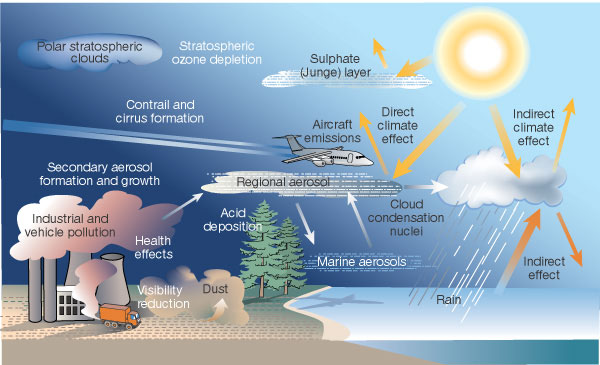900 319 0030
enquiry@shankarias.in
Why in news?
Contrary to the general notion that pre-monsoon aerosol loading results in decrease in seasonal rainfall, a long-term (2002-2013) satellite observational study and model-based analysis by IIT Kanpur has found that higher aerosol loading results in delayed but more rainfall over Central and Northern India.
What is an Aerosol?

What are the direct effects of Aerosols?
What are the indirect effects of Aerosols?
What did the IIT Kanpur study say?
Source: The Hindu